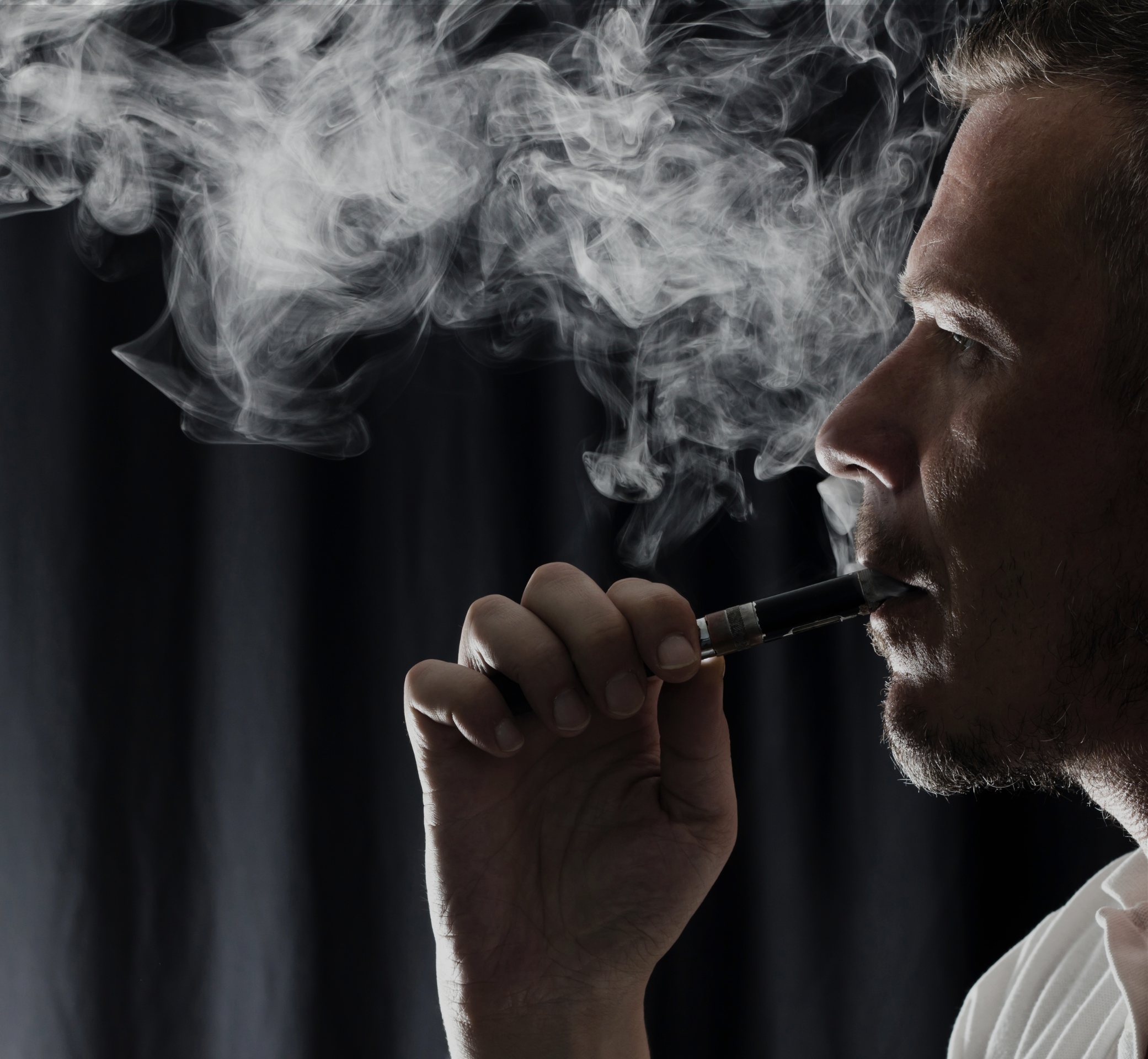Zdroje ENDS Amsterdam:
Jsou příchutě vapingu škodlivé?
Ne. Podle Zpráva EU SCHEER“Dosud neexistují žádné konkrétní údaje o tom, že by specifická aromata používaná v EU představovala zdravotní rizika pro uživatele elektronických cigaret po opakovaném užívání.”
Používají se příchutě jen pro teenagery?
Ačkoli je užívání příchutí častěji hlášeno u mladších věkových skupin, příchutě nejsou určeny pouze pro mladé uživatele a rozhodně nejsou zaměřeny na nezletilé osoby.
Různé studie ukazují, že příchutě jsou běžně používané mezi pravidelnými vapery všech věkových skupin. Ve Spojených státech a Kanadě se odhaduje, že přibližně dvě třetiny dospělých vaperů používají příchutě. V Evropě nejnovější Eurobarometr o postojích Evropanů k tabáku a elektronickým cigaretám ukazuje, že mezi těmi, kteří vapují alespoň jednou měsíčně, téměř polovina (48%) používá ovocné příchutě a 20% používá sladké příchutě. Další nedávná studie studie zjistili, že “pouze 2.1% uvedlo tabák jako nejčastěji používanou” příchuť.
Navíc, rozdíly v používání příchutí mezi věkovými skupinami jsou malé. Například ve Spojených státech činil podíl těch, kteří používali ochucené elektronické cigarety, 89,61 TP4T u dospělých ve věku 18–24 let, 86,71 TP4T u osob ve věku 25–34 let, 76,01 TP4T u osob ve věku 35–44 let a 60,41 TP4T u osob ve věku 45 let a starších, což znamená, že příchutě používá drtivá většina uživatelů ve všech věkových skupinách.
A studie zjistili, že “ve srovnání s vapováním tabákových příchutí nebylo vapování elektronických cigaret bez tabákové příchutě spojeno se zvýšeným počtem začínajících kouřit u mládeže”.
Jakou roli hrají příchutě při odvykání kouření?
Příchutě nejen zvyšují atraktivitu pro dospělé, ale jsou také nezbytné pro kuřáky, kteří se snaží přestat kouřit. Podle Dr. Collin Mendelsohn, Tím, že příchutě nepřipomínají vaperům chuť tabáku, je pravděpodobnější, že je odradí od tradičních cigaret: “Příchutě jsou důležitou součástí atraktivity vapování pro dospělé kuřáky a činí tyto produkty atraktivními jako alternativa ke kouření, stejně jako se příchutě používají ke zvýšení atraktivity nikotinové žvýkačky. Zákaz příchutí by pravděpodobně podkopal používání elektronických cigaret a přínosy pro veřejné zdraví.”
Příchutě pro vaping nejen pomáhají kuřákům s přechodem na cigaretu, ale také zajišťují, aby si znovu nekouřili. Podle Yale School of Public Health jsou ochucené vapingové přístroje spojovány s… 230% zvýšení pravděpodobnosti odvykání kouření u dospělých.
Friedman, AS a kol. (2020) zjistili, že “dospělí, kteří vapovali ochucené elektronické cigarety, měli větší pravděpodobnost, že následně přestanou kouřit, než ti, kteří používali neochucené elektronické cigarety” a “dospělí, kteří začali vapovat elektronické cigarety bez tabákové příchuti, měli větší pravděpodobnost, že přestanou kouřit, než ti, kteří vapovali tabákové příchutě”.
Když byla zakázána, University of Waterloo zjistila, že 5 z 10 vaperů by se obrátilo na nelegální zdroje pro nákup ochucených zařízení nebo by se vrátilo ke kouření cigaret.. Zákazy příchutí s sebou nesou riziko zvýšení spotřeby tabáku a výskytu rakoviny, protože omezují odvykání kouření a nutí vapery vrátit se ke kouření cigaret. Legislativa týkající se příchutí vapingu musí tuto skutečnost zohlednit a naléhavě žádáme zákonodárce, aby se vyhnuli rozsáhlému zavádění takových zákazů.
Jsou příchutě příčinou vapování a epidemie kouření mezi mládeží?
Ne. Neexistují žádné důkazy, které by spojovaly příchutě vapingu s kouřením u dospívajících nebo nezletilých, ačkoli mnoho studií ukazuje, že za tím, že děti začnou vapingovat nebo kouřit cigarety, stojí další socioekonomické a environmentální faktory. Faktory jako například osobnostní rysy, genetická predispozice, Při určování, proč teenageři vapují nebo kouří, je třeba zohlednit , kuřácké návyky rodičů a příjem domácnosti. Problém je v tom, že většina studií zohledňuje pouze několik sdílených rizikových faktorů. Podrobnější analýzu lze nalézt zde.
A studie Studie provedená v roce 2020 Kevinem Tanem, Jordanem P. Davisem, Douglasem C. Smithem a Wang Yangem zjistila, že dospívající, kteří byli obecně méně spokojeni se svým životem, s větší pravděpodobností vyhledávali riskantní zážitky a měli vyšší sklon k pravidelnému užívání nelegálních látek. Elektronické cigarety proto nejsou branou ke kouření, ale spíše špatné okolnosti v životech teenagerů vedou k různým rizikovým chováním. Stejná studie zjistila, že vaping zřejmě odvádí od kouření podskupinu mladých lidí s vysokým rizikem kouření cigaret.
A přehled patnácti studií publikovaná v roce 2019 uvádí, že “skutečný vstupní efekt u mladých lidí dosud nebyl prokázán”. Podle výzkumníků z Univerzity Nového Jižního Walesu v Sydney a Univerzity Queenslandu v Herstonu..., Nejméně 70–851 TP4T všech dospívajících zkusí vapovat poté, co již začali kouřit, a pravidelné vapování je mezi teenagery, kteří nekuřáci, velmi vzácné (pod 0,5%).
Další studie zjistili, že “ve srovnání s vapováním tabákových příchutí nebylo vapování elektronických cigaret bez tabákové příchuti spojeno se zvýšeným počtem začínajících kouřilů u mladých lidí, ale bylo spojeno se zvýšením pravděpodobnosti odvykání kouření v dospělosti”.
Navíc existují důkazy o tom, že mládež vaping a kouření v posledních letech prudce klesaly: “užívání cigaret a bezdýmného tabáku klesalo od roku 2012 rychleji, protože se začalo zvyšovat užívání elektronických cigaret. Kouření a užívání bezdýmného tabáku dosáhlo historicky nízkých úrovní mezi dospívajícími v USA”. Podobné důkazy lze nalézt v Německo, zatímco v Spojené království “Míra kouření mezi mládeží je na historickém minimu a užívání elektronických cigaret mládeží (11–18 let) je vzácné a z velké části se omezuje na ty, kteří již kouří tabákové cigarety.”.
Profesor Polosa, ve studii publikované v roce 2020 shrnuje vzorec užívání vapingu mezi mládeží takto: “Užívání elektronických cigaret v posledním desetiletí prudce vzrostlo mezi studenty středních škol a mladými dospělými, ale naštěstí od svého vrcholu v roce 2019 výrazně pokleslo. Během stejného období míra kouření neustále klesala na nové rekordně nízké úrovně. Tyto trendy argumentují proti užívání elektronických cigaret jako vstupní bráně ke kouření. Většina užívání elektronických cigaret je neobvyklá a pravděpodobně nezvyšuje riziko negativních zdravotních následků. Navíc k většině užívání elektronických cigaret dochází mezi těmi, kteří dříve kouřili.”.
Mohou zákazy příchutí zlepšit veřejné zdraví?
Existují silné důkazy o tom, že prohibice nefunguje a že zákaz příchutí neúměrně zasáhne spotřebitele, kteří se snaží přestat kouřit, a je v rozporu s cíli jakéhokoli orgánu veřejného zdraví.
Literatura naznačuje, že zákaz příchutí pro vaping povede k tomu, že se uživatelé vrátí na černý trh nebo ke kouření, což bylo potvrzeno i předchozími zkušenostmi. zákaz příchutí v San Franciscu vedlo k nárůstu míry kouření mezi teenagery poprvé po desetiletích, zatímco zákaz příchutí v Massachusetts vedlo k vyššímu prodeji cigaret.
Bližším a novějším příkladem je Estonsko. Estonsko zakázalo příchutě v roce 2020, což vedlo k tomu, že 601 000 vaperů je nadále používalo mícháním vlastních liquidů nebo jejich získáváním z černého trhu bez jakékoli kontroly kvality nebo bezpečnosti.
V důsledku toho očekáváme, že zákaz příchutí donutí většinu uživatelů přesunout se na černý trh, kde produkty nesplňují žádné bezpečnostní předpisy a mohou být škodlivé pro zdraví. Ostatní uživatelé budou nuceni vrátit se ke kouření cigaret, čímž se zvýší výskyt kouření a rakoviny a poškozuje se veřejné zdraví. Zákaz však v žádném případě nesníží vapování u mládeže. Kdyby šlo jen o chuť, nikdo by nikdy nezačal kouřit. Chuť a vůně popela, kouře a smrti v minulosti mladé lidi neodradily – takže ani zákaz příchutí neodradí.
Zákazy by byly pro politiky snadným krokem, ale ne řešením problému. Jak jsme zmínili, mladí lidé, kteří jsou nespokojeni se svým životem, mají obecně tendenci dělat riskantnější věci. Postupně je třeba zvážit faktory, jako je úzkost, kuřácké návyky rodičů, postoje vrstevníků, špatné školy a příjem domácností. Předpokládejme tedy, že politici a skupiny proti vapingu skutečně chtějí pomoci teenagerům: měli by bojovat za lepší školy, systémy zdravotní péče a ekonomické podmínky, aby se jejich rodiče mohli uživit (nebo přiznat, že nejde o mladé lidi, ale jen o výmluvu k zákazu vapingu pro všechny).
Další zdroje:
- Kampaň WVA “Porazte kouření jako Švédové”: https://worldvapersalliance.com/beat-smoking-like-the-swedes/
- Farsalinos, Polosa a kol. (2023): Vzorce užívání ochucených elektronických cigaret mezi dospělými vapery ve Spojených státech: https://www.researchsquare.com/article/rs-2658498/v1
- Pokles kouření u dospělých v letech 2012–2022 ročně: https://worldvapersalliance.com/wp-content/uploads/2023/03/WVA_Sweden_Factsheet.pdf
- Míra kouření/vapingu v Nizozemsku, Estonsku, Švédsku: https://europa.eu/eurobarometer/surveys/browse/all/series/29712
- Míra výskytu rakoviny plic v Nizozemsku, východní Anglii a Švédsku: Evropská komise
- Průzkum v Estonsku, spotřeba příchutí: https://tholosfoundation.org/wp-content/uploads/2022/05/Presentation-Estonia-.pdf
- Žádný efekt vstupní brány není v dohledu. Míra kouření v Evropě: https://europa.eu/eurobarometer/surveys/browse/all/series/29712
- Kouření/konzumace nikotinu mezi dospívajícími v USA: CDC
- Společná odpovědnost: https://www.ncbi.nlm.nih.gov/pmc/articles/PMC3600369/
- Nedovolená konzumace drog: https://monitoringthefuture.org/results/publications/monographs/
- Zákazy příchutí v jednotlivých státech USA – míra kouření u dospívajících: https://www.protectingtaxpayers.org/e-cigarettes/op-ed-more-millions-from-bloomberg-to-push-bans-will-cause-greater-harm-than-good/





